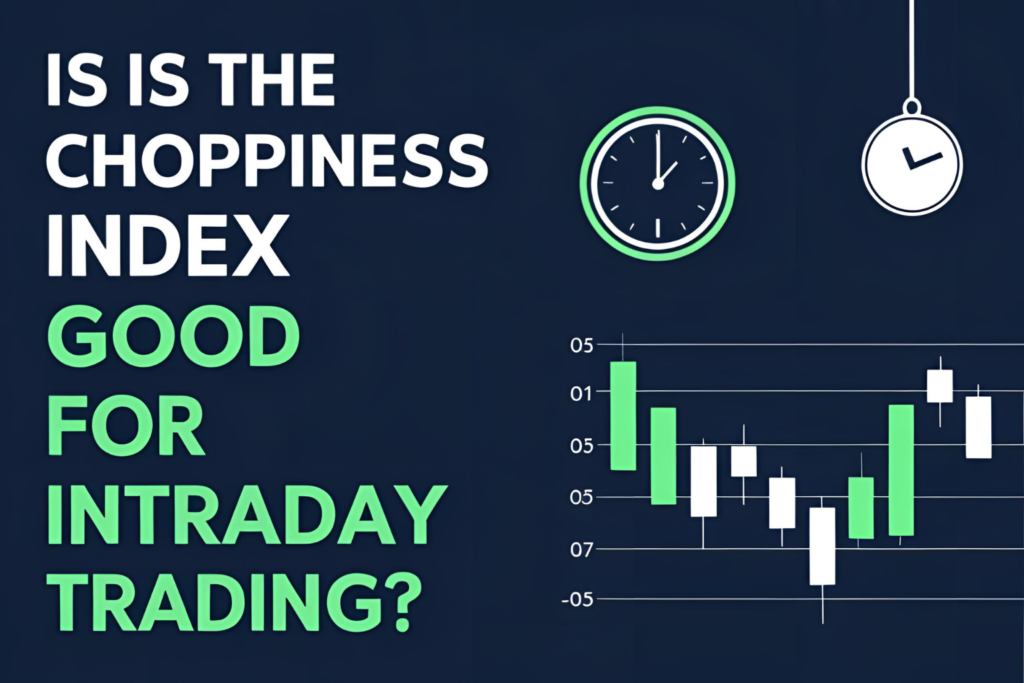Introduction
Intraday trading requires quick decisions and fast analysis. The Choppiness Index can be a valuable tool for filtering trades during the day, but is it reliable on lower timeframes? In this article, we explore how this indicator fits into intraday strategies and how to make the most of it.
What Makes the Choppiness Index Useful for Intraday Traders?
The Choppiness Index tells you whether the market is trending or ranging, which is especially helpful when trading:
- Breakouts
- Trend continuations
- Reversals
It filters out low-probability setups during sideways moves — a common pitfall for intraday traders.
Recommended Settings for Intraday Use
| Component | Value |
|---|---|
| Period | 5 to 10 |
| Timeframes | 1-min, 5-min, 15-min |
| Thresholds | 38.2 (trend), 61.8 (range) |
Adjust the period based on the speed of your trading style. The shorter the period, the more sensitive the indicator.
How to Use the Choppiness Index in Intraday Strategies
1. Trend Confirmation
Wait for the index to fall below 38.2 before using trend-following setups like moving average crossovers.
2. Range Filter
Avoid entries when the index is above 61.8, which signals indecision and sideways action.
3. Entry Timing
Pair the Choppiness Index with:
- Volume spikes
- MACD or RSI divergence
- Price action (breakout candles, patterns)
Example Setup
- Timeframe: 5-min chart
- Indicators:
- Choppiness Index (5)
- EMA 20 + EMA 50
- RSI for confirmation
Trade Example:
- CI < 38.2
- EMA 20 crosses above EMA 50
- RSI > 50
→ Enter long with proper stop-loss and risk management.
Pros of Using It Intraday
✅ Filters out sideways traps
✅ Works on multiple assets
✅ Fast-reacting when period is lowered
✅ Easy to combine with other tools
Cons to Be Aware Of
⚠ Can give false signals in highly volatile markets
⚠ Lags slightly, especially on 1-min charts
⚠ Needs confirmation — not reliable as a standalone tool
FAQs
1. What’s the best timeframe for intraday with Choppiness Index?
5-min and 15-min charts work well for most traders.
2. Is a 14-period setting too slow for intraday?
Yes. Use 5–10 for faster response on lower timeframes.
3. Can it be used in scalping?
Yes, but pair it with price action or fast indicators like VWAP.
4. Does it repaint or change signal?
No, it is a stable, non-repainting indicator.
5. What asset classes does it work with?
Works well for intraday trading in stocks, forex, crypto, and indices.
